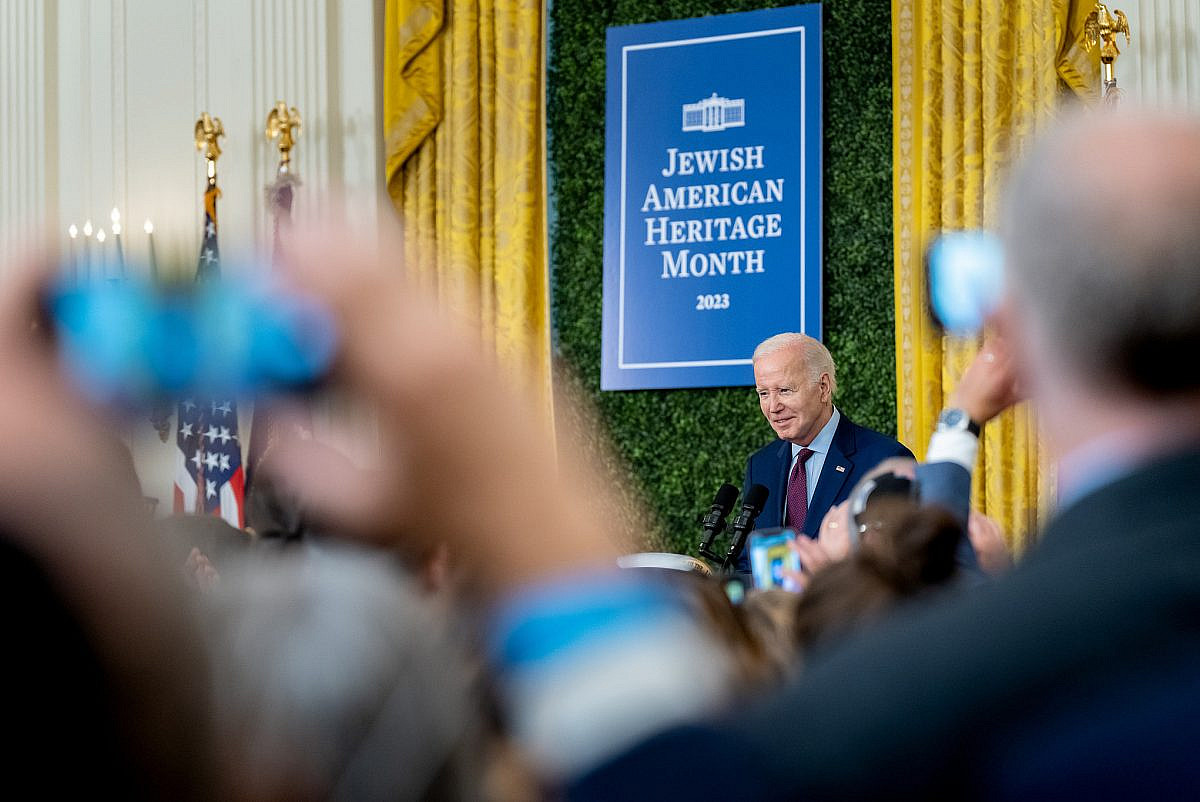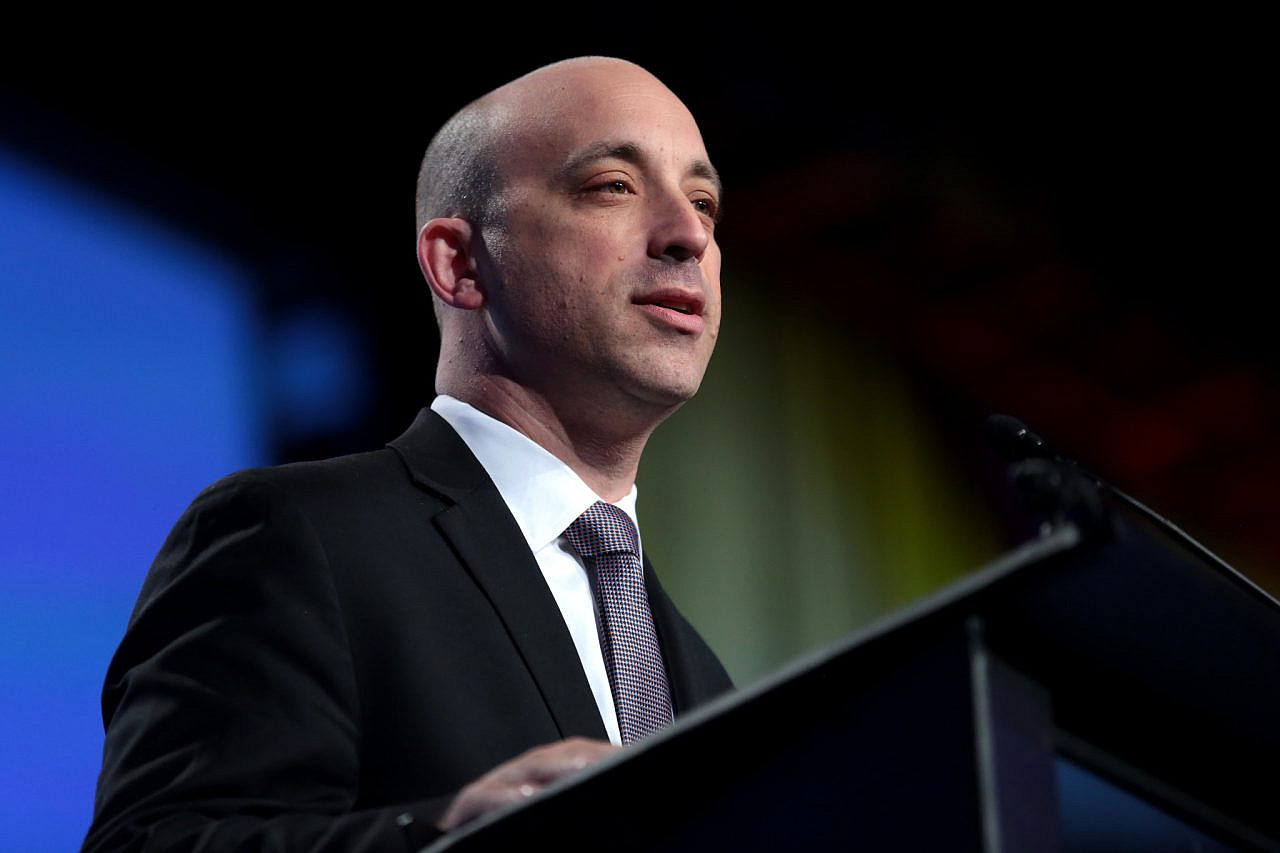“But how will they define it?” That was the question that seemed to consume American Jewish organizations and media as they waited for the Biden administration to unveil its national antisemitism strategy, the first of its kind, last May.
Indeed, the battle over defining antisemitism at times seemed more pressing than the fight against antisemitism itself. In the run-up to the strategy’s unveiling, establishment American-Jewish groups were very clear that they expected the White House to exclusively adopt the International Holocaust Remembrance Alliance’s working definition of antisemitism, a controversial tool they have been promoting for years. In the end, though, the strategy only made passing reference to the IHRA definition, noting that the United States had “embraced” it, before turning to the more concrete actions the administration wanted to pursue.
The American-Jewish leaders who had been pushing so intensively for the IHRA definition seemed split in their response. Malcolm Hoenlein, vice chair of the Conference of Presidents of Major American Jewish Organizations (COP), welcomed aspects of the plan but expressed his “regret that the document did not adopt the IHRA definition.” Hoenlein, who was addressing the right-wing evangelical lobby group Christians United for Israel, also criticized the fact that the strategy referenced other definitions of antisemitism, calling it “very unhelpful.”
Notably, Hoenlein seemed to be taking a slightly different line from the rest of his organization. William Daroff, the CEO of COP, and Dianne Lob, its then-chair, issued a statement saying that they “wholeheartedly applaud the Biden Administration’s continuing embrace of the International Holocaust Remembrance Alliance (IHRA) definition of antisemitism.”
This apparent tension within the COP leadership’s varying responses, while seemingly minor, provides a useful insight into how such establishment groups tried to renegotiate the reality that their very public campaign to place the IHRA definition at the center of the antisemitism plan had, essentially, failed.
‘Erasing Palestinians from the conversation’
The Biden administration had been grappling with a problem as it set out to write its antisemitism strategy. For years, Israel and pro-Israel groups have held up the IHRA definition as the gold standard, and have urged its adoption and codification into law. The issue, as progressive groups have noted, is that the list of examples that accompany the IHRA definition — most of which concern Israel — can be used to chill pro-Palestinian speech.
“The definition can be very easily weaponized, and routinely has been, against Palestinian critics of Israeli policy,” said Yousef Munayyer, a Palestinian-American writer and political analyst. “You [can] see that in a lot of places, including in Europe. Even expressions of Palestinian identity are considered synonymous with antisemitism.” And to equate anything Palestinian with antisemitism, he said, means “erasing Palestinians from the conversation altogether.”
The definition could also be used, Munayyer added, to sidestep questions related to freedom of expression — such as the targeting of the Palestinian-led Boycott, Divestment, and Sanctions movement (BDS), turning a conversation about the right to nonviolently boycott a state for its human rights abuses into one about discrimination against Jewish people.
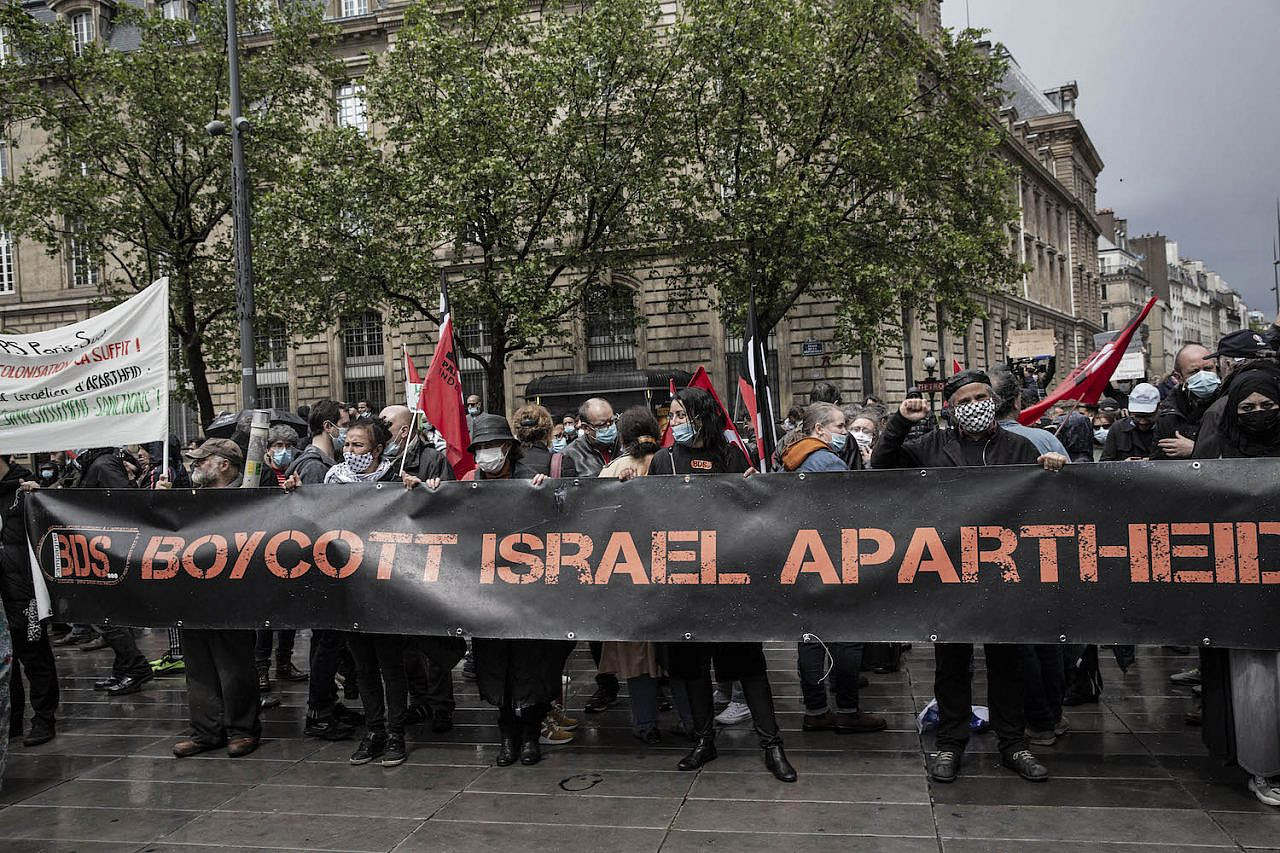
Throughout the development of the national antisemitism strategy, groups concerned about the potential adoption of the IHRA definition encouraged the White House to look at alternative interpretations of antisemitism, such as those of the Jerusalem Declaration or the Nexus Task Force. Others proposed simply not to include any definition at all, arguing it was a distraction and a substitute for answering much deeper problems, according to James Loeffler, a historian at Johns Hopkins University who is writing a book on American antisemitism.
For example, Loeffler asked, what should be the aim of civil rights campaigns? When does anti-Zionism spill into antisemitism? How do you police hate speech without violating the First Amendment? “All of those are hard questions,” he said. “They’re real policy questions. For some community leaders, philanthropists, activists — it’s just easier [to focus on a definition]. It feels like a policy solution, although it’s not. One activist said to me, ‘at least we have something clear we can start with.’” But in reality, Loeffler stressed, “it’s not clear, it’s not a start.”
Last-minute pressure
One could be forgiven for assuming that the Biden administration would have just formally adopted the IHRA definition. The most prominent Jewish organizations in the country — including the Anti-Defamation League, the American Jewish Committee, and the COP — had been lobbying for it since the White House task force to assemble the strategy was announced late last year. But they were not the only people consulted for it.
“My personal experience with the process was positive,” said Lila Corwin Berman, a professor of history at Temple University. There seemed, she said, to have been a real attempt on the part of White House officials to consult a wide array of scholars and experts. “It also did seem to me that there was an effort to broaden beyond the self-proclaimed mainstream, and talk to a broader range of American Jewish organizations,” Berman added.
Early on in the process, the focus of participants in listening sessions was certainly on the IHRA definition, said Hadar Susskind, president and CEO of Americans for Peace Now, the U.S.-based sister of the Israeli anti-occupation group. But the administration expanded the scope of who was invited into the room, and that meant the range of opinions broadened, too. In the end, “many groups who had varying views on IHRA were a part of the conversation.”
Days before the strategy’s release, Daroff, COP’s CEO, wrote an op-ed in the Jewish Telegraphic Agency urging the administration to embrace IHRA alone. Jonathan Greenblatt, head of the ADL, tweeted out the article, adding, “We join with @daroff of @Conf_of_Pres and other leaders of the U.S. Jewish community in urging the @WhiteHouse to embrace @TheIHRA as the sole definition of #antisemitism in their strategy. Anything else permits antisemitism under the guise of anti-Zionism.”
Ronald S. Lauder, president of the World Jewish Congress, echoed this sentiment and tweeted, “The international Jewish community would be gravely disappointed if the IHRA definition were not exclusively included in any action plan and would see it as not representative of their experiences and the true manifestations of modern antisemitism.” Kenneth Marcus, founder and chairman of the Louis D. Brandeis Center for Human Rights Under Law, wrote an op-ed in the Washington Examiner suggesting that the plan would be unserious if IHRA was not the centerpiece.
Despite the last-minute pressure and the reported delay of the plan’s rollout, the diversity of the groups consulted for the strategy is reflected in the final document. There is only one mention of the IHRA definition, which notes it is the “most prominent” of “several definitions of antisemitism,” acknowledges the U.S. “has embraced” it, and adds that “the Administration welcomes and appreciates the Nexus document and notes other such efforts.”
“I think it’s a very interesting document,” said Emma Saltzberg, U.S. strategic campaigns director for Diaspora Alliance, an organization advocating for “a progressive, solidaristic approach” to fighting antisemitism, because “it is so jarringly different from intra-Jewish communal discussions about antisemitism.”
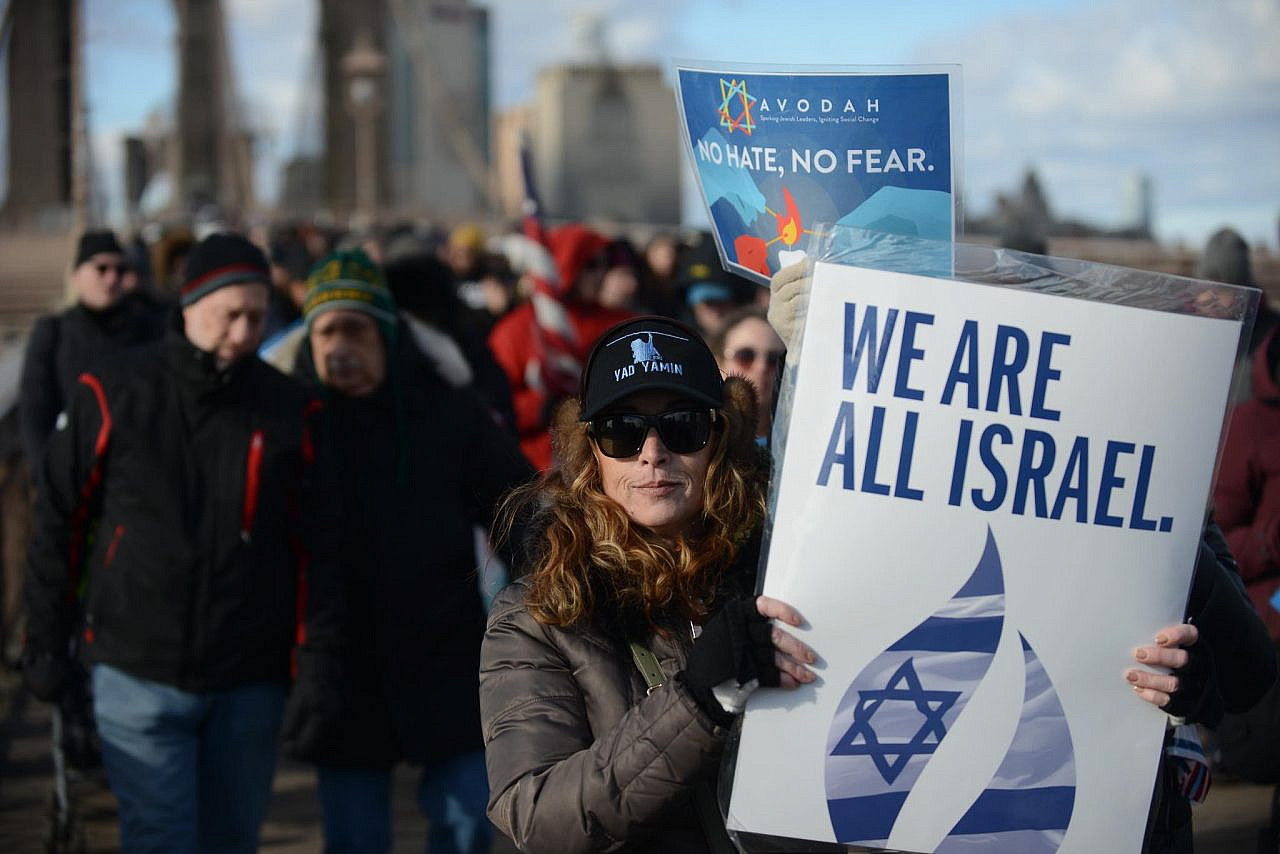
Thus, for all the wrangling around the strategy largely being a “will they or won’t they” decision regarding the IHRA, the document itself almost entirely sidestepped the issue.
Saving the narrative
“Many of the IHRA fan club were explicit and on the record beforehand that [the strategy] must endorse and codify IHRA, and that it was a failure if it didn’t,” Susskind of APN said. When the strategy failed to deliver on that front, “most of them tried to pretend that it did.”
In fairness to legacy American-Jewish groups — and indeed to anyone claiming victory after the strategy — “the document invited those kinds of aggrandizing claims,” even if unconsciously, said Berman. (Berman also noted that there were certain parts of the document that only made sense if one was deep in the weeds of Jewish communal politics; one paragraph she pointed to has a sentence on the importance of free speech next to a sentence on Israel’s right to exist — a non-sequitur for anyone who has not been following the winding road of the IHRA debate.)
“What they came up with was something that was not completely satisfying to everybody involved, but something that everyone could live with,” echoed Rabbi Jason Kimelman-Block, Washington Director of Bend the Arc Jewish Action, a national movement of progressive Jews.
After all, progressive groups have also praised the strategy, albeit not without criticisms. For example, Kimelman-Block pointed out that, if the White House was going to mention various definitions of antisemitism, it should have included the Jerusalem Declaration. He also wondered whether it makes little sense to address one hatred at a time given how interconnected they are in the U.S. political context today. Still, progressive groups were able to look approvingly on at least some parts of the strategy.
A more cynical political take, though, is that the pro-IHRA groups are claiming the strategy fulfilled their objectives so as to save face and to save the narrative that IHRA remains the foremost tool for understanding and fighting antisemitism.
Like COP’s official statement welcoming the embrace of IHRA, the ADL similarly praised the strategy’s “adoption” of the definition. The AJC’s press release, too, described the strategy as “a reaffirmation of the administration’s embrace [of the IHRA definition].” Julie Platt, chair of the Jewish Federations of North America, said in a statement, ”we are pleased that the White House reaffirms the [IHRA definition], and maintain our commitment to its uncontested use.”
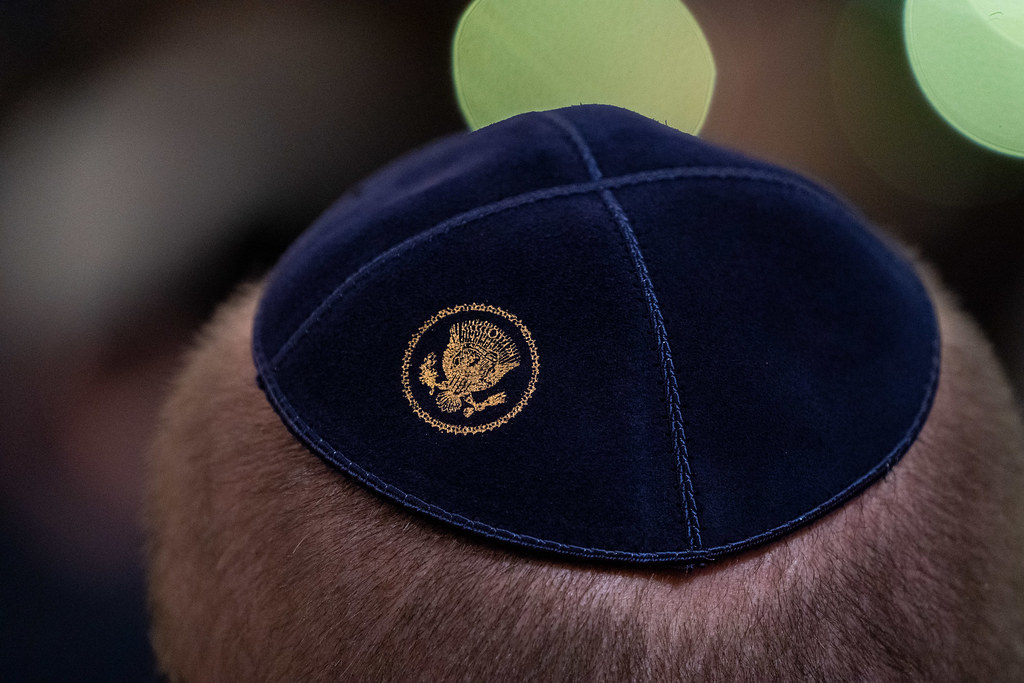
“[T]hose groups need to claim that they got something for all their advocacy,” Kimelman-Block explained. Or, as Saltzberg put it, “What they’ve realized is what the strategy actually says doesn’t matter as much as the narrative that gets created around it.”
A ‘totemic object’
Naturally, the fight over the IHRA definition did not and will not end at the White House. “The challenges, the battle around the definitions certainly continues,” Susskind said, “most specifically at the UN,” which is similarly working on an action plan to combat antisemitism.
A meeting to unveil a draft of the UN plan was postponed until September because of disagreements over its content. Familiar battle lines have been drawn: 21 members of Congress, all Democrats, sent a letter to Linda Thomas-Greenfield, the U.S. ambassador to the UN, to encourage the international body to adopt a strategy similar to that of the White House. Eleven establishment Jewish groups, in turn, wrote a letter saying that those “Jewish members of Congress should know better,” encouraging a public embrace of their chosen IHRA definition.
There are other fights, too, at the state and municipal levels across the United States. The city council of Clifton, New Jersey, for example, recently rejected the IHRA definition, and King County, Washington’s proclamation against antisemitism did not include the definition. On the other hand, 18 states did adopt it in some capacity in 2022. Meanwhile, U.S. colleges are hotly contesting the adoption of IHRA on their campuses, raising nationwide debates about its effect on academic freedom, student organizing, and anti-racism guidelines.
“We are only going to see greater use of these tactics [from pro-IHRA groups] over time,” Munayyer predicted, adding, “I should say: it’s not [coming from] a position of strength.” In the past, he explained, Israel’s supporters didn’t need to rely on such tactics to try to avoid discussion and debate. “They’re needed today because the hegemony of support for Israel, which is something that was not really questioned before, is now being questioned far more often.”
What happens next thus depends not so much on what IHRA advocates continue to claim, but rather on whether people heed what the IHRA’s opponents say and do.
Berman referred to a colleague of hers who likened IHRA to a “totemic object,” an example of “these wedges that one uses to try to create political terrain and political divisions.” And it is still very possible that IHRA’s role as such will become further solidified, entrenching it “as a proxy” for what is allowable politics with respect to being Jewish, or analyzing antisemitism, or speaking about Israel.
Most read on +972
“One of my concerns is that more individual Jewish people and Jewish congregations will throw up their hands and say ‘screw this’ … but you’re going to have these institutions … that have this historical legacy — they’re still going to be holding this up as the Jewish perspective. That’s the kind of stuff that alienates a lot of people.”
But there are other versions of the future. “Where I would like all of this to go is for people to call out that strategy and say it is perfectly acceptable to have a range of viewpoints about what it means to call something antisemitic,” Berman continued. “Part of the question in the longer run: are the different entities … that aren’t subscribing to this orthodoxy, are they going to develop a strategy of power that says there are more of us, we do have resources, we have the ability to speak?”
And then there is the fact that, if pro-IHRA groups are hoping to settle differences of opinion on Israel by way of civil rights legislation, they may well learn that they are not the only groups that can do so. “This is America,” Loeffler said. “Other groups, including Palestinian-Americans, can call out discrimination and file lawsuits.”
The journey of using policy and law to articulate what various hatreds are, and to fight them, is still a relatively new one in the United States. American Jews are not the only ones on that journey, and it may not lead where establishment groups might hope. Still, the White House strategy did not wade into the war over how to define antisemitism. Instead, it threw the question back to American Jewish groups — and the country at large.

